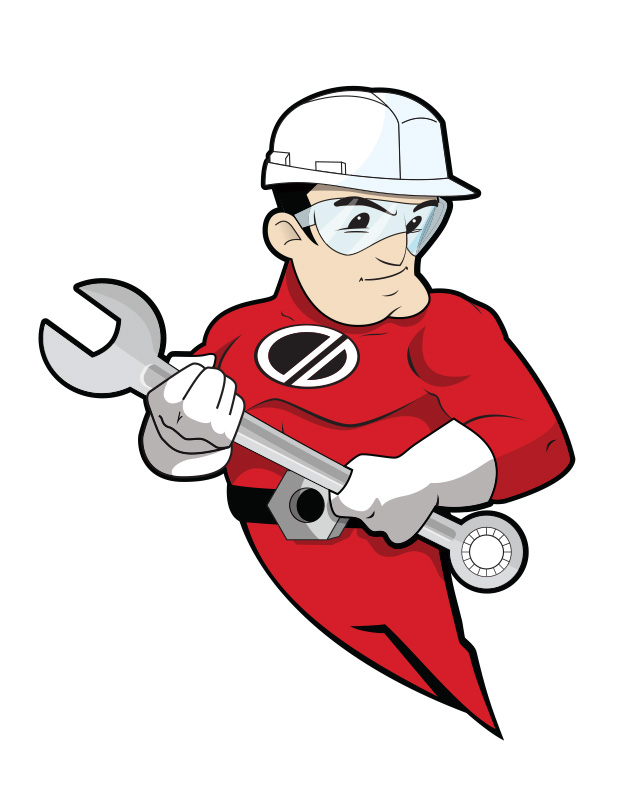Bolting: Precision where it counts most
How can transportation maintenance, repair and operation facilities help prevent wheel run-off accidents with a
precision torque.
In 1992, the National Transportation Safety Council conducted an investigation* following a series of fatal accidents involving heavy trucks. “Within a 3-week period between October 14 and November 4, 1991, three of the fatal truck separation accidents occurred, including an accident in which the left front wheel of a box truck broke off and rolled into the path of an oncoming school bus carrying 46 fourth-graders and their chaperones. The 365-pound wheel slammed through the windshield of the bus, killing two children and a chaperone,” the official document stated. Improper bolt tightening was listed as a leading cause of these horrific accidents. “Wheel failures involving broken studs, lugs, or nuts most often result from inadequate nut torque or failure to retorque nuts after initial fastener placement,” the report’s authors wrote.
Bad Bolting: A Problem That’s Not New… New Solutions!
This problem is not new, but practical solutions are just beginning to emerge. When you assemble wheel hubs and bearings or a wheel mounting system with an impact gun or ratchet, the typical torque accuracy rate can vary 30% up or down from the technical specifications. Such dispersion can lead to major equipment failures, costly repairs, and even human injury and death. When the stakes are this high, “estimating torque” is simply not good enough.
An “overloaded” bolt can cause the machine to come to a complete stop.
Metal and alloy bolts are designed to stretch. If a bolt is tightened to engineering specifications, a small amount of stretch is normal and will not cause future problems. A small amount of stretch does not change the physical properties of the bolt and allows it to return to its original shape for re-tightening.
On the other hand, an overtightened bolt is stretched so much that its physical properties are changed to the point of compromising its strength and durability.
An overtightened bolt may crack, shear, strip or come loose, causing significant damage to equipment or even personal injury.
Torque/Torque vs. Torque and Angle Tightening Method
When you’re working in smaller spaces, like a bus fleet garage or a heavy equipment shed, you need your tools to be as versatile as possible. Having a torque tool that lets you set a precise angle can go a long way toward greater accuracy. Cordless torque tools are even better for maneuverability and speed. A torque and angle tool can help you achieve greater accuracy every time. In every tightening operation, the primary goal is preload accuracy (pounds of tension in the bolt). Preload, a function of torque, is based on parameters like friction, which naturally vary. The graph in Fig. 2 clearly shows the advantage of angular torque over torque: the black line represents the ideal theoretical preload/torque relationship, with the dashed red lines representing the range of preload you can achieve for a given torque due to variation in friction. If you torque to a value that is a certain percentage of the desired final value and then tighten the remainder by turning a predetermined angle (established by testing), the spread is then reduced to be closer to the ideal preload value.

Cofa: Safety. Quality. Efficiency
The LION-25 Battery Pistol Compared to Conventional Tools
How can you improve torque accuracy when conventional tools aren’t designed to do that? HYTORC recognized this problem and, drawing on decades of industrial engineering expertise, designed a solution: a cordless gun designed specifically for small bolting applications, allowing you to work with greater efficiency and torque accuracy.
Precise automated control
Humans are more prone to error than machines. A torque tool with digital controls can reduce potential human errors when it comes to interpreting the torque table and setting up the tool. Why leave accuracy to chance when you can see a clear reading, adjust the tool on the go, and enjoy superior performance and quality from your bolting?
Reliable data recording
Overtorque is beginning to be recognized as a major cause of vehicle malfunction. That’s why having a record of your own work well done can be a powerful defense against potential litigation. A tool with data logging capabilities can be a big help in quality assurance. It’s only a matter of time before OSHA and other government regulators begin requiring more stringent documentation of bolting operations.
Profitable operating
Compared to conventional tightening solutions used in small bolting applications, the LION-.25 gun requires no additional tools to get the job done right, helping the operator save time and money.
Why COFA has been using Hytorc Tools since the beginning
HYTORC makes industrial bolting safer and easier. Since 1968, the company’s engineers have been dedicated to developing the highest quality industrial bolting systems. From steel mills and mining equipment to refineries, power plants and wind turbines – HYTORC has developed solutions for every conceivable bolting application. This is why COFA has become the official distributor of Hytorc solutions throughout Quebec and Eastern Canada.
The LION-.25 battery-powered torque gun brings HYTORC’s industrial ingenuity to the commercial market, because safety is just as important whether you’re building a NASA spacecraft, an Apache helicopter, or a school bus.
Source: 1 National Transportation Safety Board Safety Recommendation H-92-102
http://www.ntsb.gov/safety/safety-recs/recletters/H92_102.pdf

